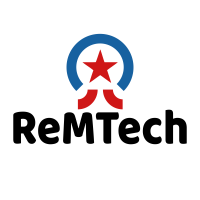Introduction
In the dynamic landscape of modern business, the ability to create a supply chain that is simple, efficient, and resilient is a strategic imperative. As organizations navigate global markets, respond to unforeseen disruptions, and meet evolving consumer demands, the intricacies of supply chain management become paramount. This detailed guide delves into the multifaceted dimensions of crafting a supply chain that is not only streamlined and responsive but also robust in the face of challenges.

Land and Expand
The concept of “Land and Expand” is a strategic approach that holds particular significance in the realm of supply chain management. It involves establishing a foothold in a specific market or region and then progressively expanding operations based on insights gained during the initial phase. In the context of creating a simple, efficient, and resilient supply chain, the “Land and Expand” strategy emphasizes the importance of starting with a focused and manageable scope. By beginning operations in a targeted market or with a specific product line, organizations can gain valuable insights into local nuances, customer preferences, and operational challenges. This phased approach allows for the fine-tuning of supply chain processes, ensuring that scalability is built on a foundation of tested and optimized operations. It mitigates the risk of overextension, enabling organizations to create a resilient supply chain that can adapt to the unique demands of each expansion phase.
Foundations of a Simple Supply Chain
- Simplicity in Design: The simplicity of a supply chain starts with its design. Streamlining processes, reducing unnecessary complexities, and adopting a clear and straightforward structure lay the foundation for simplicity. A simplified design facilitates easier management, quicker decision-making, and a more agile response to changing market dynamics.
- Supplier Consolidation: Streamlining the supplier base is a key element of a simple supply chain. Consolidating suppliers reduces administrative overhead, simplifies relationship management, and fosters stronger partnerships. By working closely with a select group of reliable suppliers, organizations can enhance communication, negotiate better terms, and ensure consistent quality.
- Clear Communication Channels: Establishing clear communication channels within the supply chain is crucial. From suppliers to manufacturers, distributors, and retailers, transparent and efficient communication facilitates the smooth flow of information. This includes sharing demand forecasts, inventory levels, and production schedules in real-time to prevent bottlenecks and enhance overall coordination.
Use Cases of Companies that Built Simple Efficient and Resilient Supply Chains
In the pursuit of a simple, efficient, and resilient supply chain, the spotlight often falls on companies that exemplify innovation, adaptability, and operational excellence. The “most interesting company” in this context is one that has successfully navigated the complexities of the modern business landscape. This company is characterized by its ability to simplify processes, leverage technology for efficiency gains, and exhibit resilience in the face of disruptions.
Zara’s Supply Chain Strategy :
One compelling example of a Company in the context of creating a simple, efficient, and resilient supply chain is Zara, the Spanish fast-fashion giant. Zara’s supply chain strategy has set industry benchmarks for agility, responsiveness, and sustainability.
- Agility and Responsiveness: Zara’s supply chain is characterized by its unparalleled agility and responsiveness. The company’s unique approach to “fast fashion” involves shortening the product development cycle to bring new designs from the drawing board to store shelves in a matter of weeks. Zara’s ability to quickly interpret fashion trends, adapt designs, and produce small batches of clothing enables it to respond swiftly to consumer preferences. This agility is achieved through close collaboration with suppliers, in-house production capabilities, and a vertically integrated supply chain.
- Vertical Integration and In-House Production: Zara’s vertical integration is a key element of its supply chain strategy. Unlike many competitors who outsource manufacturing to third-party suppliers, Zara owns a significant portion of its production processes. This allows the company to have greater control over manufacturing timelines, quality standards, and the overall production cycle. By minimizing dependencies on external suppliers, Zara can make real-time decisions and adjustments to meet changing demand patterns.
- Efficient Distribution Model: Zara’s distribution model is designed for efficiency. The company employs a centralized distribution center that serves as a hub for receiving, processing, and redistributing products to stores worldwide. This centralized model reduces lead times and ensures that the latest designs reach stores promptly. Zara’s emphasis on quick inventory turnover and limited stock in stores contributes to an efficient distribution system that aligns with the principles of lean inventory management.
- Technology and Data-Driven Decision-Making: Zara leverages technology and data-driven decision-making to enhance its supply chain efficiency. The company utilizes advanced analytics to analyze sales data, track inventory levels, and identify emerging fashion trends. This data-driven approach allows Zara to make informed decisions about production, replenishment, and inventory allocation. Technology plays a pivotal role in ensuring that the supply chain remains adaptive and aligned with consumer preferences.
- Sustainability and Responsiveness to Trends: Zara’s supply chain is also noteworthy for its responsiveness to sustainability trends. The company has made commitments to environmentally friendly practices, including the use of organic cotton and the implementation of initiatives to reduce water consumption in production processes. Zara’s ability to incorporate sustainability into its supply chain practices while remaining responsive to rapidly changing fashion trends showcases a balance between efficiency, environmental responsibility, and consumer demands.
- Resilience through In-House Control: Zara’s in-house control over various aspects of its supply chain contributes to resilience. The company’s ability to quickly adjust production volumes, alter designs, and respond to external disruptions is enhanced by its direct oversight of critical processes. This resilience is particularly evident during unforeseen events, such as supply chain disruptions or shifts in consumer behavior, where Zara’s in-house control allows for rapid adaptations and mitigations.
- In summary, Zara exemplifies “The Most Interesting Company” with its supply chain strategy that seamlessly integrates agility, efficiency, and sustainability. The company’s ability to navigate the complexities of the fashion industry through vertical integration, data-driven decision-making, and a commitment to sustainability offers valuable insights for organizations seeking to create a supply chain that is not only efficient and responsive but also adaptable in the face of industry dynamics.
Amazon’s Supply Chain Strategy:
Amazon’s transformative journey from an online bookstore to a global e-commerce and technology giant serves as a compelling case study for organizations aspiring to elevate their supply chain capabilities.
- Operational Efficiency and Simplicity: Amazon is renowned for its commitment to operational efficiency and simplicity. The company has streamlined its supply chain processes to perfection, optimizing everything from warehouse management to order fulfillment. The implementation of advanced technologies, robotics, and automation in its fulfillment centers exemplifies a commitment to simplicity in design. By embracing lean principles, Amazon has significantly reduced lead times, minimized waste, and enhanced overall efficiency in its supply chain operations.
- Innovation and Adaptability: What sets Amazon apart is its relentless pursuit of innovation and adaptability. The company consistently explores cutting-edge technologies to stay ahead in the dynamic e-commerce landscape. For instance, Amazon’s integration of drones for last-mile delivery showcases its commitment to staying at the forefront of technological advancements, enhancing not only efficiency but also creating new avenues for resilient supply chain practices.
- Customer-Centric Approach: Amazon’s customer-centric approach is a hallmark of its success. The company prioritizes the customer experience in its supply chain strategy, ensuring fast and reliable delivery, transparent order tracking, and a hassle-free returns process. This customer-centricity not only contributes to higher customer satisfaction but also underscores the importance of aligning supply chain operations with the evolving expectations of end-users.
- Supply Chain Transparency: Amazon places a strong emphasis on supply chain transparency, providing customers with visibility into the journey of their orders. The company’s commitment to responsible sourcing, ethical practices, and sustainability is communicated through initiatives like the “Amazon Sustainability Data Initiative.” By transparently sharing information about its environmental impact, Amazon sets a benchmark for supply chain transparency, showcasing the importance of responsible business practices.
- Resilience in the Face of Challenges: Amazon’s resilience in the face of challenges is evident in its ability to scale operations rapidly and effectively respond to unexpected disruptions. During peak seasons like Prime Day or the holiday season, Amazon demonstrates its capacity to handle surges in demand while maintaining operational integrity. The company’s investment in building redundancy and flexibility into its supply chain enables it to adapt swiftly to unforeseen events, such as the challenges posed by the COVID-19 pandemic.
Efficiency as the Cornerstone
- Optimized Inventory Management: Efficient inventory management is a linchpin of a streamlined supply chain. Implementing just-in-time (JIT) principles, adopting demand-driven forecasting, and utilizing advanced analytics contribute to maintaining optimal inventory levels. This minimizes holding costs, reduces waste, and ensures products are available when and where they are needed.
- Lean Manufacturing Practices: Adopting lean manufacturing practices is instrumental in enhancing efficiency. By eliminating waste, optimizing production processes, and implementing continuous improvement initiatives, organizations can achieve higher output with fewer resources. Lean practices contribute to shorter lead times, increased production flexibility, and improved overall operational efficiency.
- Technology Integration: Leveraging technology is essential for optimizing supply chain efficiency. Implementing advanced technologies such as Enterprise Resource Planning (ERP) systems, Warehouse Management Systems (WMS), and automation solutions improves visibility, enhances data accuracy, and accelerates decision-making processes. Technology integration also facilitates real-time tracking of shipments and inventory.
Building Resilience into the Supply Chain
- Diversified Sourcing Strategies: Building a resilient supply chain involves diversifying sourcing strategies. Overreliance on a single source can expose the supply chain to vulnerabilities. Exploring alternative suppliers, dual-sourcing strategies, and regional diversification contribute to resilience by mitigating risks associated with geopolitical, economic, or natural disruptions.
- Scenario Planning and Risk Management: Anticipating potential disruptions through scenario planning and implementing robust risk management strategies are critical for resilience. By identifying and assessing potential risks, organizations can develop contingency plans, ensuring quick and effective responses to unexpected events such as natural disasters, geopolitical tensions, or global health crises.
- Supplier Collaboration for Risk Mitigation: Collaborating closely with suppliers is pivotal for creating a resilient supply chain. Establishing open communication channels, sharing risk assessments, and working collaboratively on contingency plans enable swift responses to challenges. Building strong relationships with suppliers fosters a shared commitment to risk mitigation and enhances overall supply chain resilience.
Continuous Improvement and Adaptability
- Data-Driven Decision-Making: Harnessing the power of data is essential for continuous improvement. Organizations should leverage analytics and business intelligence tools to derive actionable insights from supply chain data. Data-driven decision-making enhances forecasting accuracy, identifies optimization opportunities, and supports ongoing improvements in efficiency and resilience.
- Employee Training and Skill Development: The human element is central to a supply chain’s adaptability. Investing in employee training and skill development ensures that the workforce is equipped to embrace new technologies, navigate evolving market trends, and contribute to the continuous improvement of supply chain processes. An empowered and knowledgeable workforce is a key asset in creating an adaptable supply chain.
- Flexibility in Operations: Building flexibility into supply chain operations is essential for adaptability. This involves designing processes that can accommodate changes in demand, production volumes, and market conditions. Flexible operations enable organizations to respond quickly to shifts in consumer preferences, market dynamics, and unexpected disruptions.
The Impact of E-commerce
The advent and widespread adoption of e-commerce have ushered in a paradigm shift in supply chain dynamics. Understanding and adapting to the impact of e-commerce is fundamental to creating a supply chain that is not only efficient but also responsive to rapidly evolving consumer expectations. E-commerce has accelerated the demand for faster order fulfillment, increased visibility into product movements, and heightened customer-centricity. As part of the drive towards simplicity, organizations must streamline their logistics and distribution processes to meet the demands of online retail.
Furthermore, the efficiency gains from technologies like automated order processing, real-time tracking, and data analytics are crucial for thriving in the e-commerce landscape. Resilience, in this context, involves the ability to scale operations seamlessly in response to fluctuations in online demand, as well as proactively addressing challenges like last-mile delivery and returns. E-commerce is not just a channel; it is a transformative force that shapes the very fabric of supply chain strategies, making it a pivotal consideration in the quest for an adaptable and robust supply chain.
Conclusion: Crafting Excellence in Supply Chain Management
In conclusion, creating a simple, efficient, and resilient supply chain is a dynamic and multifaceted undertaking that requires a holistic approach. From the simplicity of design to the efficiency of operations and the resilience to navigate challenges, each facet contributes to the overall excellence of the supply chain.
Organizations that master the art of crafting such supply chains position themselves for sustained success in an ever-changing business landscape. As complexities increase and uncertainties persist, the journey toward a supply chain characterized by simplicity, efficiency, and resilience becomes not just a strategic imperative but a defining element of organizational excellence.


